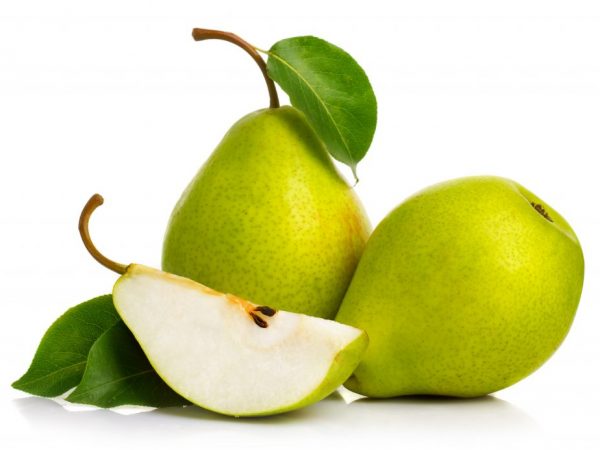Description of pear Tenderness
Pear Tenderness is very popular not only because of its high yield, but also because of its pleasant taste. In the description of the variety, unpretentiousness in care and a beautiful appearance are noted.

Description of pear Tenderness
Characteristics of the variety
The pear variety Tenderness was bred by Russian breeders as a result of crossing the species Tema and Klappovaya Lyubimitsa. It is included in the State Register of Russia. Ideal for growing in all regions of the country. The yield of the variety is 30 kg from 1 tree.
Description of the tree
The tree is quite tall, up to 6 m in height. Crohn's medium characteristic, narrow pyramidal shape. Fruiting is observed on the main and lateral shoots. Flowers are white with a pleasant scent. Round compact green leaves with a smooth surface.
Description of fruits
- the form is large, pear-shaped;
- fruit length about 12 cm;
- the weight of an individual pear of the Tenderness variety is about 200 g;
- the color is yellow, with a slight burgundy blush;
- the peel is covered with a dense layer of waxy coating.
Features of taste and use
The pulp is juicy, soft. When cut, a creamy shade is observed. The taste is rich and pleasant. The sweetness and some acidity should be highlighted.
Can be used not only fresh, but also used to prepare various dishes. Pleasant taste is noted when making jam, compotes or dried fruits. Often, baby food is prepared from the Tenderness pear.
Planting Pear Tenderness
You need to plant the plant in the spring, at the beginning of March. So the tree will be more resistant to temperature extremes and diseases. You should decide on a landing site. It is necessary to give preference to permeable soil, which receives a sufficient amount of oxygen. The level of acid-base balance should be no more than 4%. If you know that the groundwater is close to the roots, you need to install a drainage system in the ground.
The seedling must be 2 years old, free from damage and disease. The best development is observed in those representatives whose root length is 20-25 cm. It is important to prepare a place for planting in advance. The dug hole should be about 100 cm deep and up to 60 cm wide. Organic fertilizers (humus, mullein or compost) are poured into it, in an amount of 7 kg. After 2 weeks, when all the nutrients have penetrated into the soil, the seedling can be planted. The roots are evenly distributed around the entire perimeter of the hole, covered with earth and carefully tamped. At a distance of 10 cm from the seedling, a metal peg should be placed, which will serve as a support. As the seedling develops, you need to increase the size of the peg to which you will tie the plant.
Care

Caring for a pear is very easy
According to the description, this variety is unpretentious to care for. It is important to adhere to the standard measures that apply to most pear crops. The variety needs feeding. There should be 2 of them for the entire growing season.
- The use of potassium components.It should be carried out at the beginning of flowering. It is necessary to dilute 30 g of potassium nitrate in 10 liters of water and pour 5 liters of solution under the root of the plant.
- Carried out at the time of fruit formation. Dilute 50 g of superphosphate in 10 liters of water and pour 7 liters of solution under each plant.
You don't need to water the crop often. The optimal watering interval is 1-2 weeks. Each time you need to pour 20 liters of water into 1 tree. It is believed that it is best to irrigate in the morning or evening when there is no direct sunlight. After watering, after 2-3 days, you can loosen the soil and remove weeds.
Crown pruning is a very important care step. In early March, you need to remove damaged and dry branches that absorb too many nutrients. At the end of October, the crown should be thinned and its height should be slightly cut.
Pest and disease control
The main diseases that can affect this species are scab, bacteriosis and fruit rot.
- You can fight scab by spraying with colloidal salt (20 g per 10 liters of water).
- You can get rid of bacteriosis by spraying with a manganese solution (2 mg per 10 l of water).
- In the fight against fruit rotting, a solution of wood ash (200 g per 10 liters of water) will come to the rescue.
Aphids and beetles are found among pests. An effective remedy against aphids will be spraying the tree with Oxychom (40 mg per 10 liters of water). A solution of cayenne pepper (1 teaspoon per 10 liters of water), which is also sprayed, will help against beetles.
Conclusion
To grow a healthy tree that would provide you with tasty and high-quality fruits every year, you should adhere to all recommendations for care and planting. The slightest mistake can cause a disturbance in the development of the tree.


